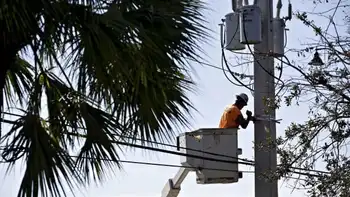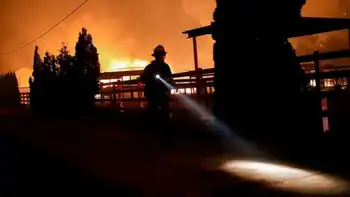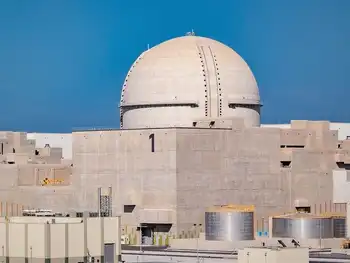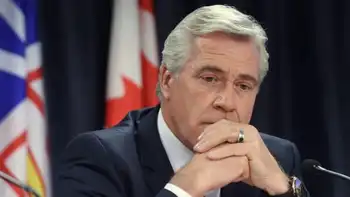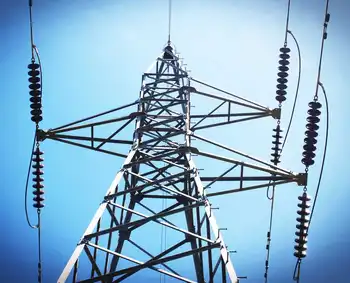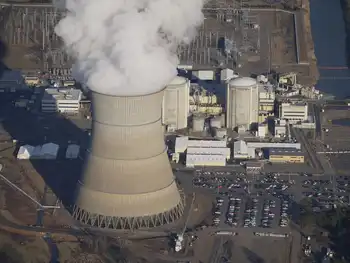Utilities return to natural gas on lower price, coal concerns
By Investor's Business Daily
NFPA 70e Training
Our customized live online or in‑person group training can be delivered to your staff at your location.

- Live Online
- 6 hours Instructor-led
- Group Training Available
But when gas prices began to climb at the turn of the century, natural gas was put on the back burner. Coal, long the workhorse fuel for electric generation, emerged once again as the first choice for utilities adding capacity.
By 2002, there were plans to add 36,000 megawatts of coal-fired capacity within five years, according to the Energy Department's National Energy Technology Laboratory.
But King Coal sits uneasy on its throne. Just 4,500 megawatts — or 12% of that planned new coal capacity — has been put in place, NETL said in an April report.
Challenged by environmental opponents and mounting problems in financing, utilities have been dropping plans for coal plants faster than, well, hot coals.
The upshot: Natural gas has once again emerged as a favored alternative.
Earlier this year, Southern Montana Electric dropped plans to build a coal-fired plant. Instead, the utility will rely on a combination of natural gas and wind turbines for new capacity.
Tim Gregori, general manager at Southern Montana Electric, blamed regulatory "uncertainties" over coal's future.
Power company AES Corp. (AES) also dropped plans for a coal-fired facility in Oklahoma.
Speaking to investors in May, CEO Paul Hanrahan noted that energy security concerns were driving a shift to "indigenous fuels and renewables." At the same time, environmental concerns were driving shifts to "renewables and low-carbon sources."
Both of those pushes favor natural gas.
Art Holland, vice president of Pace, a Fairfax, Va.-based energy consulting firm, regularly consults with utility clients. He says interest in natural gas "has increased significantly with the decline in attraction of coal-fired generation."
Coal's loss of appeal stems mainly from uncertainty over new regulation that would seek to curb greenhouse gas emissions.
The consensus is that such regulations — and their cost — would fall most heavily on coal.
Coal's contribution to greenhouse gases is summed up in figures from DOE's Energy Information Administration.
Electricity generation accounts for 40% of all U.S. carbon dioxide emissions. Coal produces 52% of U.S. electricity but 83% of the carbon dioxide produced by power plants. Natural gas produces 16% of the energy and 15% of the CO2.
Technology for safely storing the carbon dioxide produced by coal plants would be costly and is still not fully tested. It also carries unknown safety risks, experts say.
"The current debate on energy policy will by default make natural gas the path of least resistance for power generation," said Jeb Armstrong, an analyst at Calyon Securities.
Meanwhile, expanded estimates of U.S. natural gas supplies have helped whittle away coal's chief advantage: price.
New exploration and drilling technology have freed up vast gas reserves previously thought unrecoverable. The most recent estimates put U.S. natural gas reserves at a 100-year supply.
This surfeit of supply, along with slowed recessionary demand, has helped to sharply lower gas prices in recent months. Coal is still cheaper, but the gap has narrowed.
Advanced Power North America, an independent developer of power plants, is currently working to develop gas-fired plants in New York and Massachusetts.
With many older plants, New England and the rest of the Northeast are fertile ground for new generating facilities.
But proposals for coal plants have been met with a frosty reception.
"It would be impossible to develop a coal-based plant in Massachusetts," said Tom Spang, president of Advanced Power North America.
Natural gas plants are more acceptable.
"Natural gas is the cleanest fossil fuel there is," Spang said.
In addition to halving carbon dioxide emissions, natural gas also slashes by "well over 90%" emissions of sulfur dioxide and nitrous oxide, Spang said.
Natural gas also has appeal when paired with renewable sources such as solar and wind.
For all the attention they receive, solar and wind are still limited to low single-digit market share in electric generation. Though technical advances and government support have brought prices down, they still remain comparatively costly.
Another problem: The sun and wind only shine and blow some of the time. So a utility must be able to complement such stop-and-go power with a steadier source.
Natural gas is ideal because it's "good at ramping up and down," said Spang. This is one advantage over nuclear power, for example, which cannot be readily turned on and off.
Natural gas plants are also cheaper to build than nuclear or coal plants, Spang says. So utilities recoup their investment faster.
The risk with natural gas is that its prices are volatile.
Burned before by a sudden rise in gas prices, many utilities are showing caution in switching shelved coal projects to natural gas. And they are mostly tight-lipped about their plans.
Little wonder. A massive announced rush to natural gas could trigger a new wave of price hikes, dimming some of the fuel's appeal.





